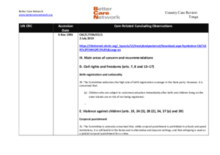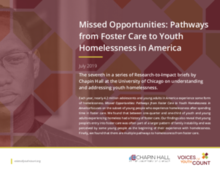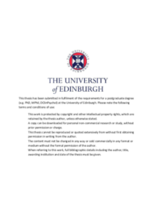Displaying 771 - 780 of 2214
This country care review includes the care-related Concluding Observations adopted by the Committee on the Rights of the Child.
This brief outlines how US child welfare systems can implement these eight strategies to address existing disproportionalities and disparities for LGBTQ+ children, youth, and families.
This Research-to-Impact brief is the seventh in a series of briefs that presents key findings from Voices of Youth Count. It elevates the voices of young people whose pathways into homelessness included time in foster care and points to opportunities for prevention and intervention.
This thesis paper explores (1) how children in care in the UK are making use of mobile communication devices for contact with members of their familial and friendship networks; (2) to what extent devices like the smartphone, tablets and computers either improve or hinder communication; and (3) how contact using mobile communication devices and Internet is being managed by foster carers and social workers.
The objective of this document, developed by the Bureau of Justice Assistance (BJA) and the National Institute of Corrections (NIC), in collaboration with the Urban Institute and Community Works West, is to detail a set of practices that correctional administrators in the United States can implement to remove barriers that inhibit children from cultivating or maintaining relationships with their incarcerated parents during and immediately after incarceration.
This open access systematic review aimed to appraise the extant research evidence from longitudinal studies and answer the question: how do educational outcomes differ between children in contact with Children’s Social Care (CSC) and the general population in the UK?
This country care review includes the care-related Concluding Observations adopted by the Committee on the Rights of the Child.
This article elucidates the challenges parents face when they lose the care of their children and their experiences of family counselling as a support service in Norway.
The research presented in this report aimed to broaden and deepen understanding of the barriers and enablers that care experienced students encounter in going to, being at and staying at college and university in Scotland.
The aim of this particular strand of the Permanently Progressing? study was to investigate the experiences, pathways, and outcomes of children who became looked after away from home, together with the factors associated with achieving permanence.








